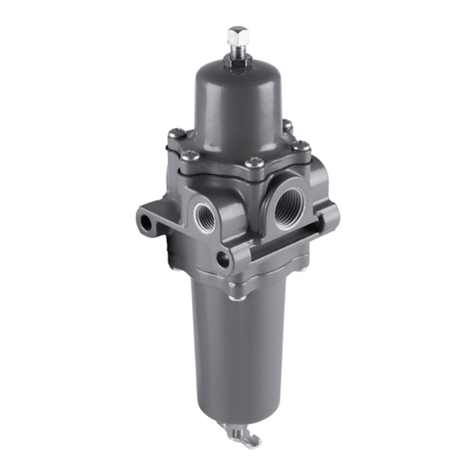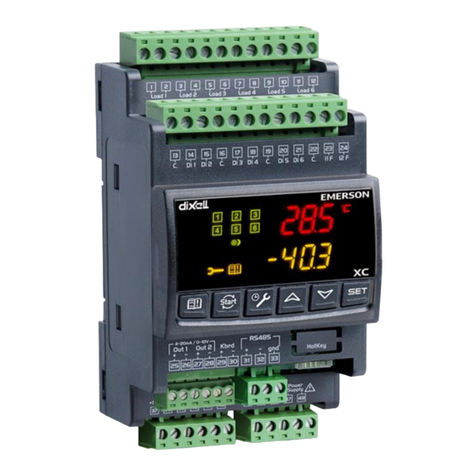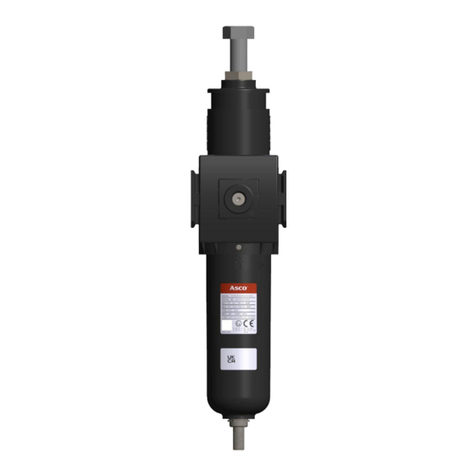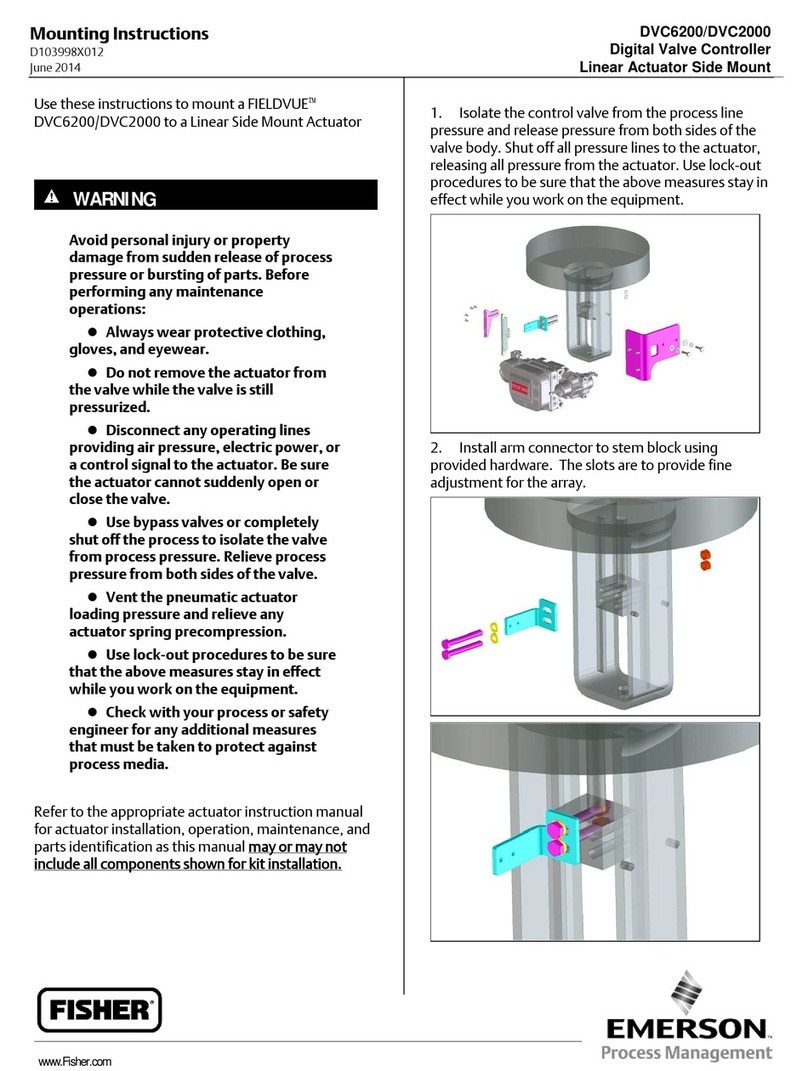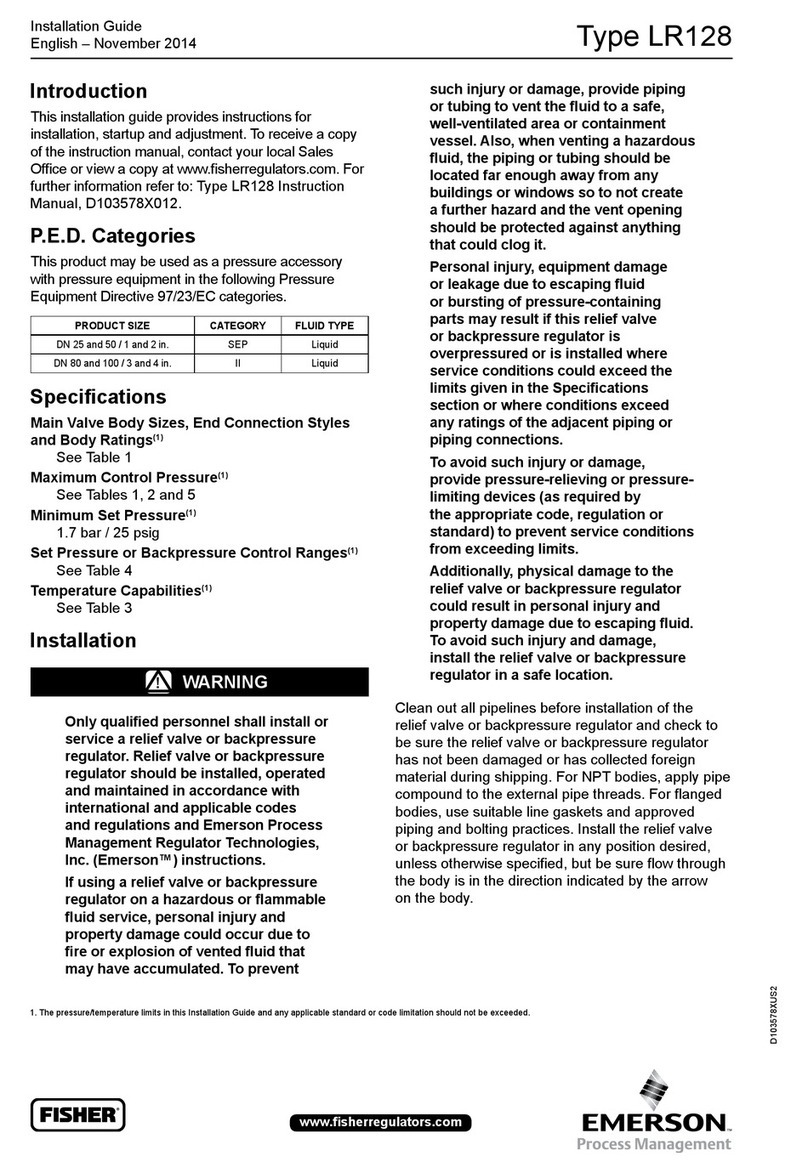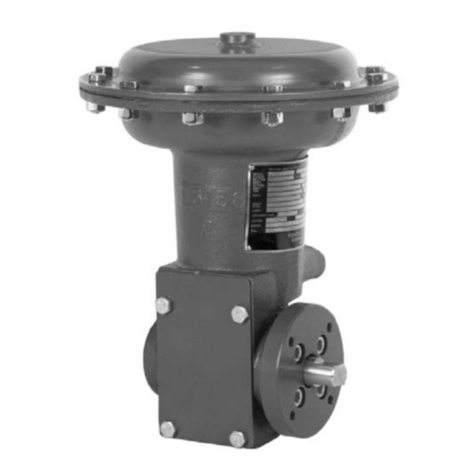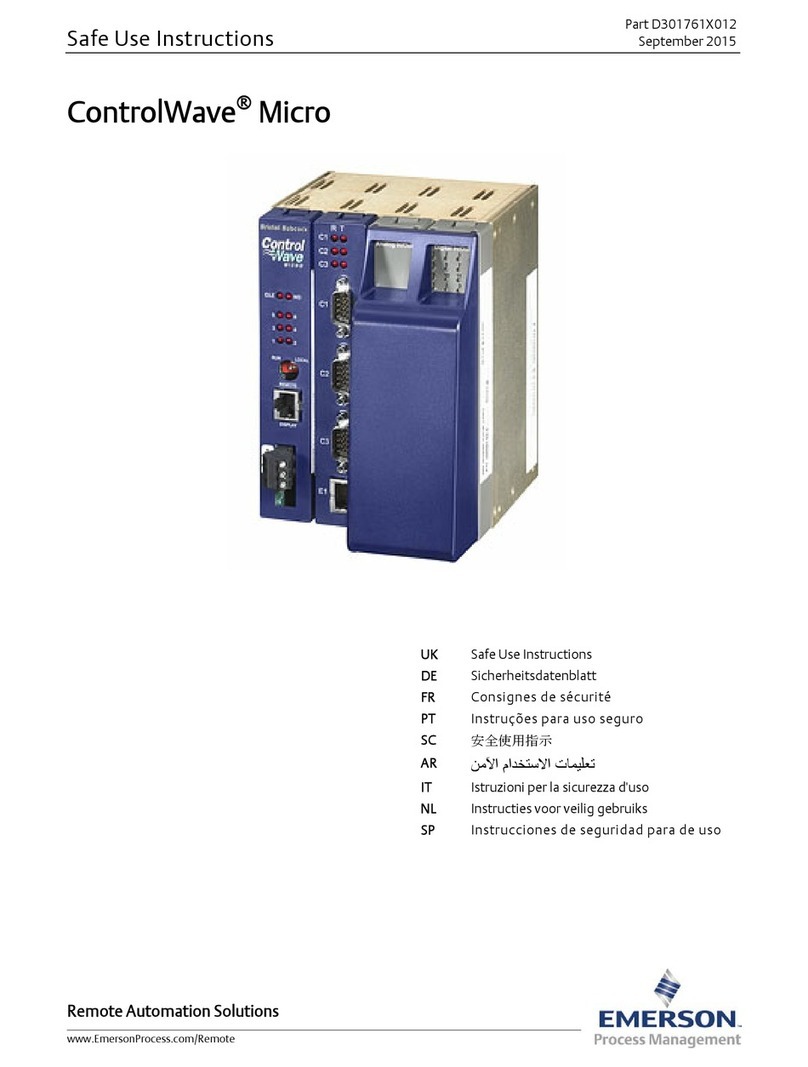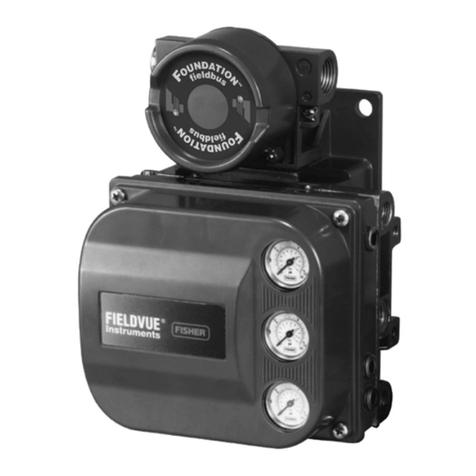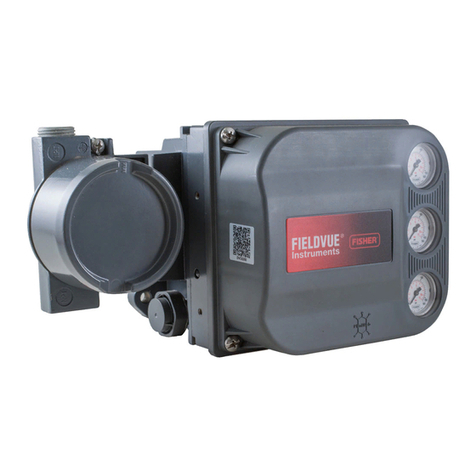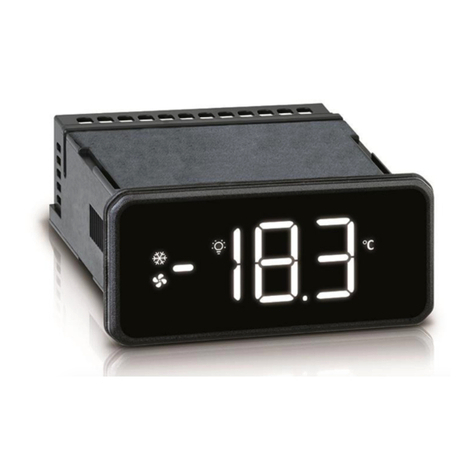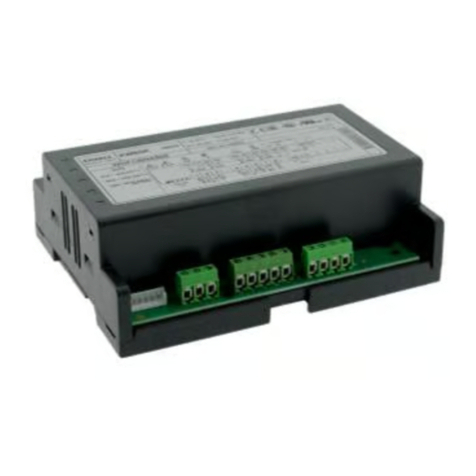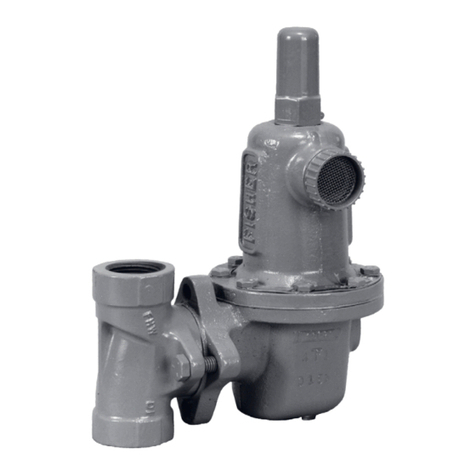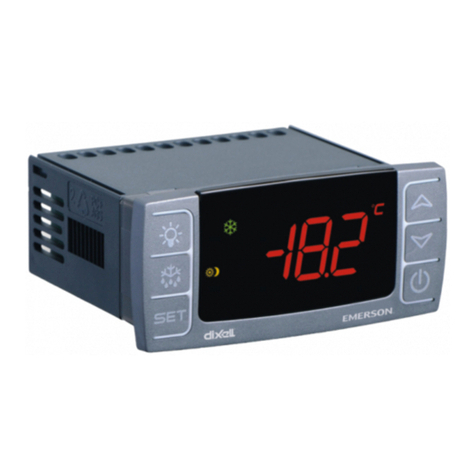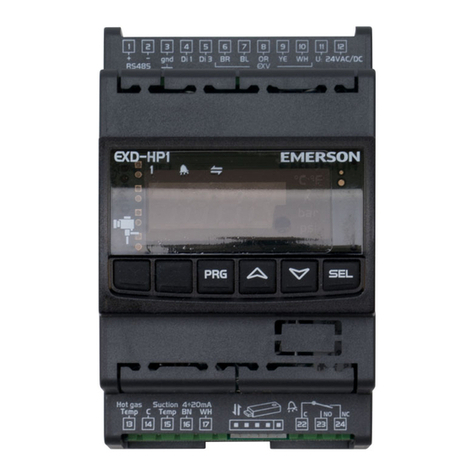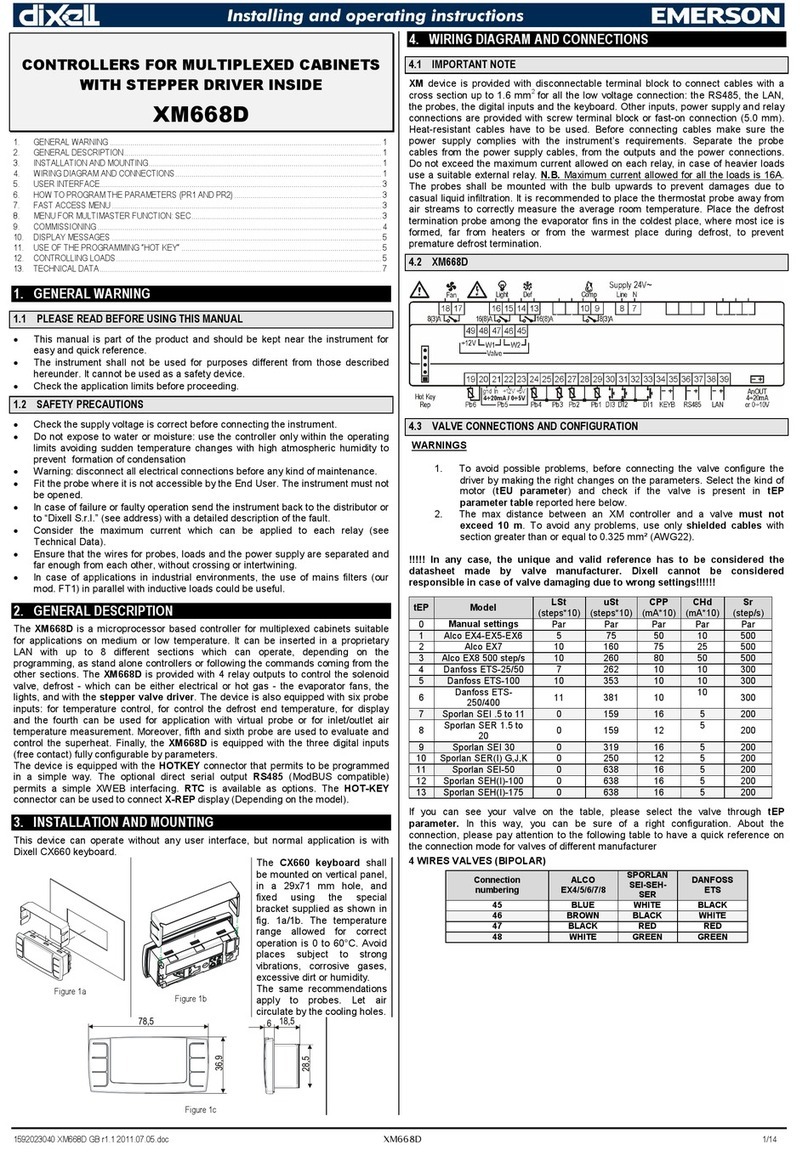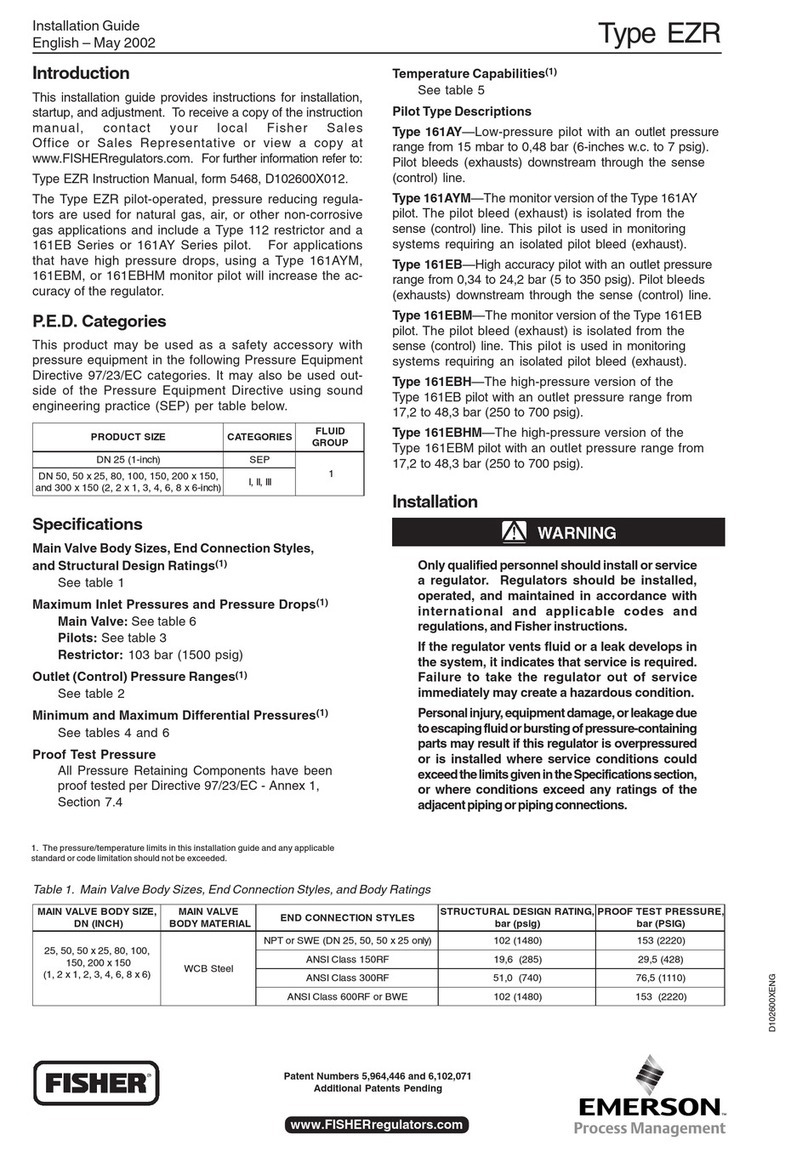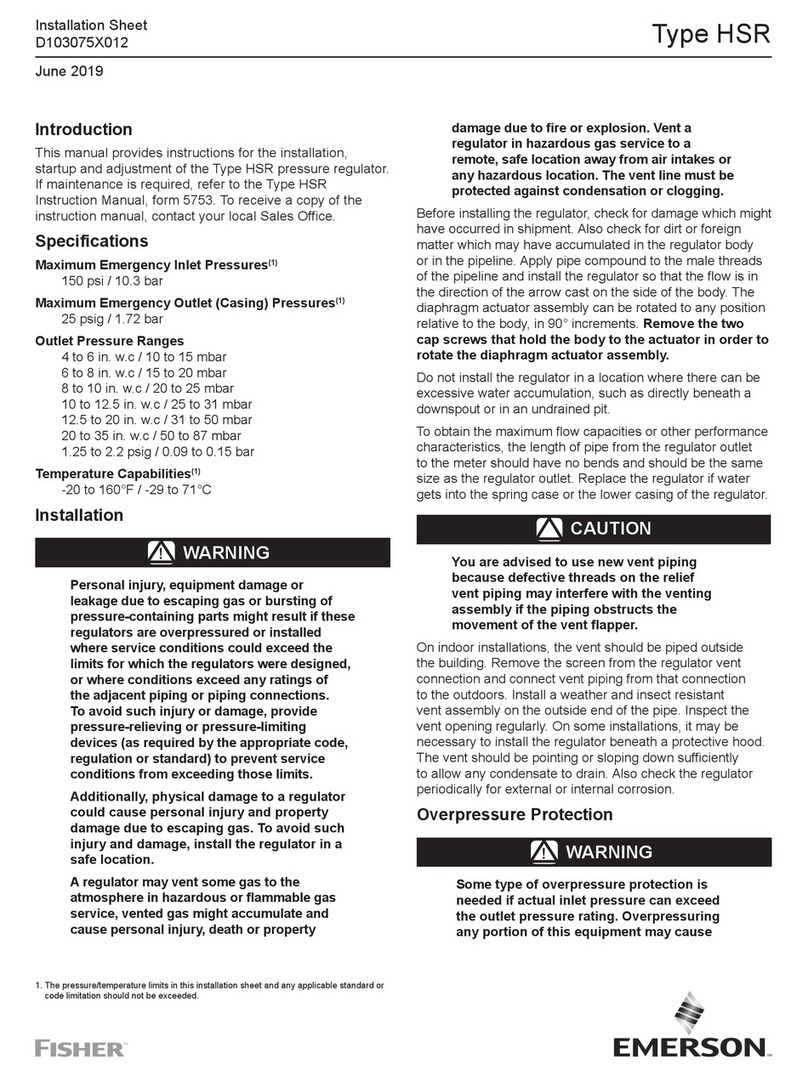2 ATEX instructions for use in (potential)
explosive areas
2.1 Intended use
The Hytork XL series pneumatic actuators are a Group II category
2 equipment and intended for use in areas in which explosive
atmospheres caused by mixtures of air and gases, vapours, mists or
by air/dusts are likely to occur. Therefore it may be used in (ATEX)
classied Zones 1, 2 (Gasses) and/or 21, 22 (Dust).
2.2 Safety instructions
a Assembly, disassembly and maintenance, is only allowed at the
actuator, when, at the time of the activity, there is not an explo-
sive mixture.
b Prevent entry of explosive mixtures into the actuator. We suggest
utilizing a solenoid with a “breather” function on spring return
actuators when used in potentially explosive atmospheres.
c The plastic position indicator caps are approved for ATEX gas
group IIB areas. In areas where ATEX gas group IIC require-
ments apply, do not use the plastic position indicator cap of sizes
XL426 up to XL4581, to avoid build up of static electricity.
d In order to avoid increasing dust explosion risk, periodically clean
dust deposits from all equipment.
e When equipment is installed in a hazardous area location (po-
tentially explosive atmosphere), prevent sparks by proper tool
selection and avoiding other types of impact energy.
f Proper care must be taken to avoid generation of static electricity
on the non-conductive external surfaces of the equipment (e.g.
rubbing of surfaces, etc.).
g HYTORK XL actuators do not have an inherent ignition source
due to electro-static discharge, but explosion hazard may be
present due to the discharge of static electricity from other valve
assembly components.
– To avoid personal injury or property damage, make sure that
the valve is grounded to the pipeline before placing the valve
assembly into service.
– Use and maintain alternate shaft-to-valve body bonding, such
as a shaft-to-body bonding strap assembly.
2.3 Maximum temperatures
Temperature Valid for actuator
model
Ambient range ATEX class TX (ATEX surface
temperature)
-20..75°C T6 T85°C (185°F)
Standard Tem-
perature models
-20..80°C T5 T90°C (194°F)
-20..80°C T1...T4 T90°C (194°F)
-20..75°C T6 T85°C (185°F)
High Temperature
models
-20..90°C T5 T100°C (212°F)
-20..120°C T1...T4 T130°C (266°F)
-40..75°C T6 T85°C (185°F)
Low Temperature
models
-40..80°C T5 T90°C (194°F)
-40..80°C T1...T4 T90°C (194°F)
-20..250°C for
2 hours T2 T260°C 500°F) Tunnel
application models
Note:
a The actual maximum surface temperature depends not on the
equipment itself, but mainly on operating conditions like e.g. the
temperature of the supply media.
b The specied values are valid with the following conditions:
- Maximum working frequency of the actuator is 1Hz at a maxi-
mum of 50 cycles per hour and at maximum load.
3 Operating Media, Pressures and Temperatures
3.1 Operating media
a Use clean, dry or lubricated air or inert gas.
b Maximum pressure : 8 barg / 116PSI
Note:
On applications where the spring stroke of single acting actuators
is pneumatically operated, the maximum pressure is 6.5 bar /
95PSI
c Dew point 10 K below operating temperature.
d For subzero applications take appropriate measures.
3.2 Operating Temperature range
a Using standard seals and greases the operating temperature
range is -20°C to + 100°C (-4°F to +212°F) as is indicated on the
product label.
b Other medias and temperatures may be used but consult your
local Hytork supplier for conrmation as to suitability.
4 Actuator to Valve Installation
The Pinion drive, coupling device and Valve Stem should be cen-
tered and concentric to prevent any side loading to the Pinion Radial
Bearing and Valve Stem Seat area. Ensure that the coupling shaft to
be operated is a tight but free sliding t into the female drive in the
Actuator Pinion (19).
4.1 Bi-directional Travel Stops
Hytork XL actuators have two travel stops (22, 23 and 24) for setting
acurately the travel and the open and closed positions. XL2586 and
XL4581 can be tted with the optional Bottom Stop Block for setting
the travel.
The actuator has a factory set stroke of 90°. The adjustable stroke
range of the actuator is :
- at closed (0°) position : -3° to +7°
- at open (90°) position : -83° to +93°
REMARK:
- If the actuator is assembled for reverse operation, instead of
standard operation, Stop “1” will adjust the “open” position
and stop “2” the “closed” position.
“2” “1”
Stop marked Stop marked
View from above
Fig. 1 Travel stops
